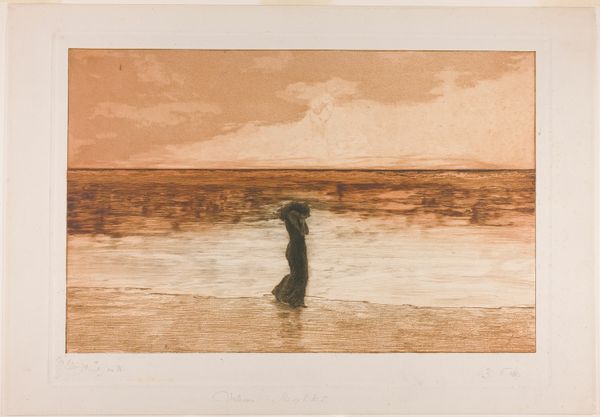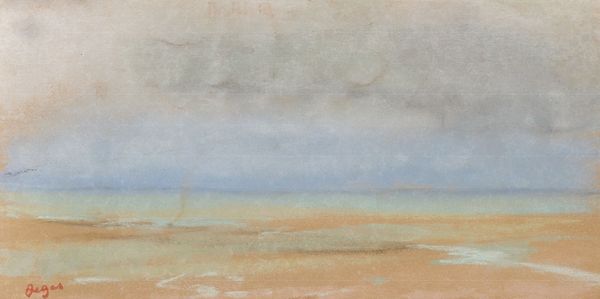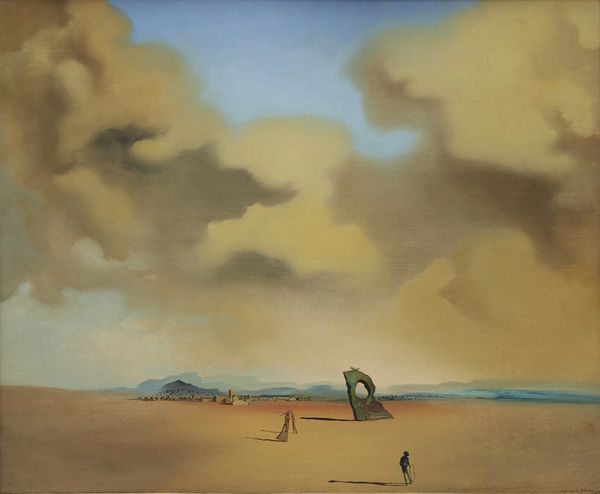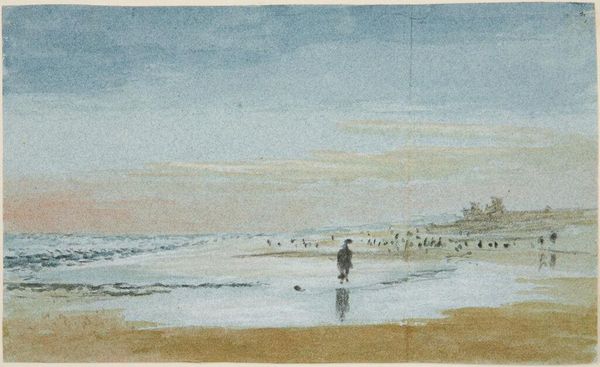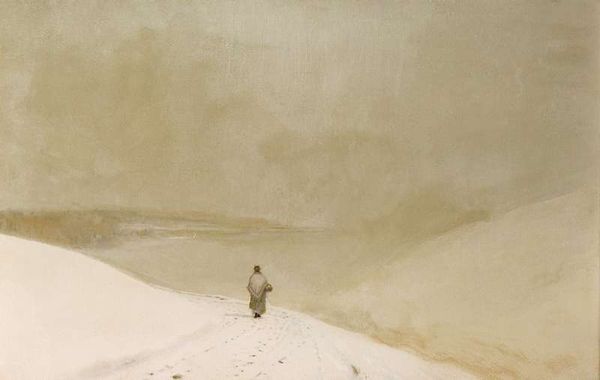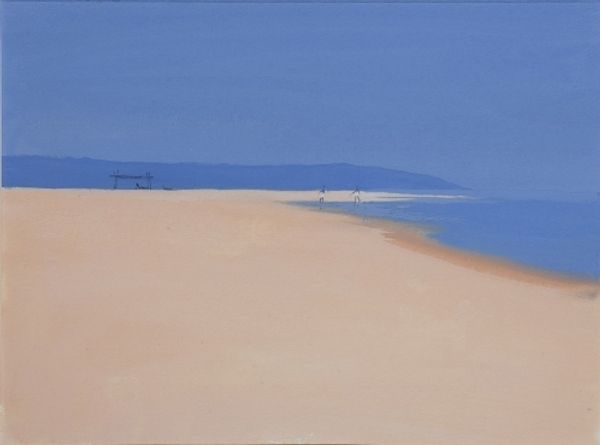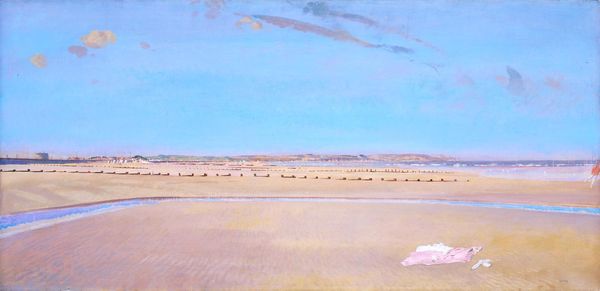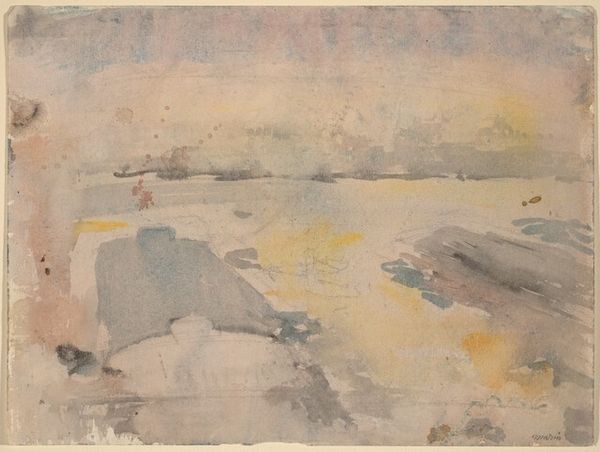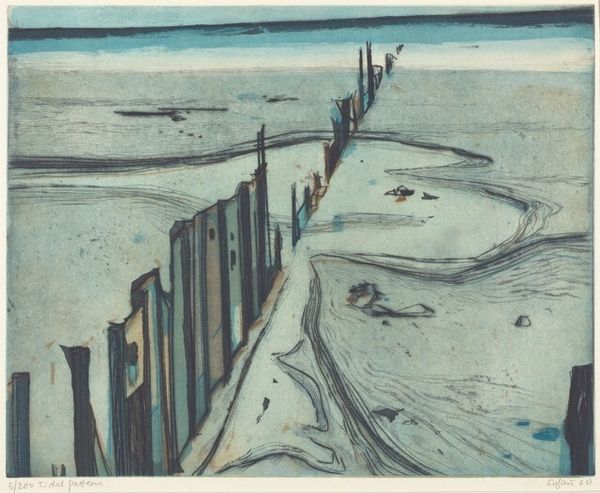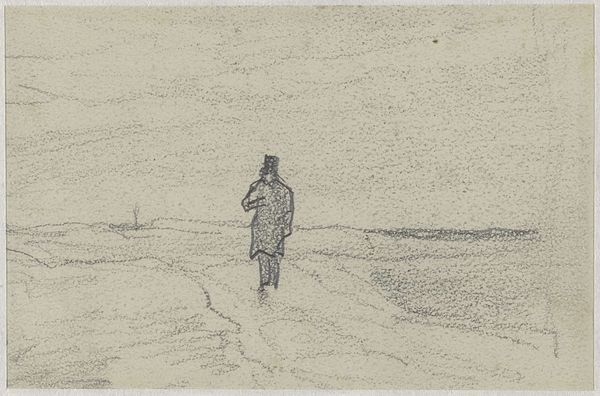
watercolor
#
landscape
#
charcoal drawing
#
oil painting
#
watercolor
#
intimism
#
symbolism
#
watercolor
Copyright: Public Domain: Artvee
Editor: So, here we have Léon Spilliaert's "La Démocratie en marche," created around 1908 using watercolor. There's this lone figure walking along a vast, sandy expanse. The minimalist composition and muted tones create a really melancholic atmosphere, but I'm curious – what do you see in this piece? Curator: Beyond the melancholic reading, I see an emphasis on the materiality of artistic creation. Look closely – it's watercolor, a medium often associated with the domestic, with leisure. Yet, it depicts a stark, seemingly political scene, evidenced by the title, "Democracy on the March." What does this tension between material and subject tell us? Is it an artist toying with labor, accessibility, and artistic hierarchy? Editor: That's a fascinating perspective. I hadn’t considered the conscious choice of watercolor impacting the work's meaning itself, or the artist playing with what art making 'should' be. Do you think Spilliaert chose it specifically to challenge the notion of 'high art' at the time? Curator: Precisely! Watercolors were more affordable and accessible than oils, the traditional choice for significant political or historical paintings. This raises questions about who could afford to participate in artistic production and whose voices were heard. Is Spilliaert commenting on the democratization of art itself, or even, what does "Democracy in Action" really look like on an individual basis? Does it appear isolating? Editor: That makes a lot of sense, especially connecting the material choice with the title. It changes my understanding entirely. Thank you! Curator: And thank you! Thinking through the materiality has highlighted the multiple layers of meaning in this work.
Comments
No comments
Be the first to comment and join the conversation on the ultimate creative platform.
